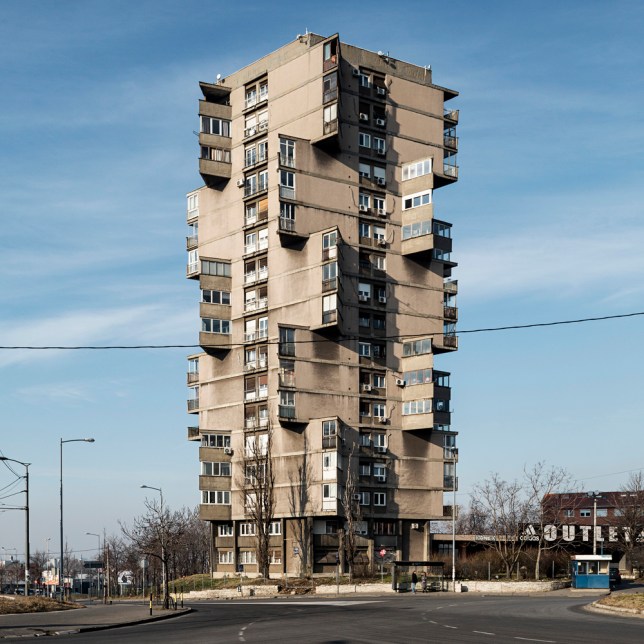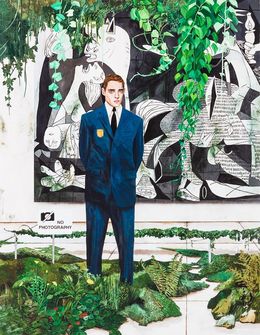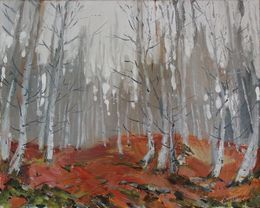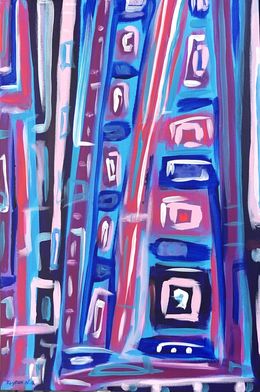
Brutalist Architecture: 5 Examples of Emblematic Buildings

The famous Brutalist architecture arouses as much admiration as it does disgust. Based on the use of raw materials such as concrete, it initially inspires only the coldness of soulless buildings. However, it is far from being limited to this economic and efficient dimension. Brutalist architecture should be deciphered in the light of its time, the post-war period, which was marked by the optimism of a better, more egalitarian future. In order to understand this architectural movement, Artsper would like to introduce you to five emblematic buildings!
1. “Les Choux de Créteil”: the spirit of Brutalist Architecture
Designed by Gérard Grandval and completed in 1974, Les Choux de Créteil is a group of 10 buildings. Each 21-meter-high building is surrounded by rounded balconies, which give it the nickname “choux” which means cabbage. As a progressive architect, Grandval wanted to break with the military style of construction. He left behind the alignments of buildings with brutal structures, in favor of round, feminine and vegetal forms. This is how he gave the quartier du Palais a singular face: that of a field of concrete flowers. If the cabbages are far from being unanimously approved, many critics forget that these buildings were initially intended to be planted. Dear to Gérard Grandval’s heart, the balcony-petals should have served as a support for gardens, evolving with the seasons and the desires of the inhabitants.

2. The Cité Radieuse: colored Brutalism
A pioneer of Brutalist architecture, Le Corbusier designed the Cité Radieuse in Marseille between 1947 and 1952. He used concrete for its raw character, to which he added colorful shades. Inside these huge concrete blocks, lines follow a perfect regularity but are partially interrupted by a different grid: blue, yellow and red – colors as “primary” as concrete – whose repetition is sometimes redundant, sometimes illogical.

3. The “Toblerone”: in between social progress and dystopia
This residential building was designed by the architect Rista Sekerinski in 1963. Located in Belgrade, Serbia in the district of Karaburma, it marvelously characterizes the brutalist architecture of the Eastern bloc countries. The initial purpose of this building was to promote social development and to provide as much housing as possible. Between austerity and futurism, this concrete megastructure is as fascinating as it is disturbing.

4. The Geisel Library: a controversial figure of Brutalist Architecture
The central library of the University of San Diego, the Geisel Library was built by the architect William Pereira in 1970. As an emblem of Brutalist architecture, it is nonetheless a concrete monstrosity to some. Inspired by science fiction, so dear to his heart, Pereira designed this monumental work, composed of sixteen pillars. Concrete columns that widen diagonally and point to the sky, supporting five floors of glass windows. The structure of this library may seem cold from the outside, but once inside its walls, it offers visitors the chance to be bathed in stunning natural light.

5. The Barbican Estate: Brutalist Architecture as Eldorado
Designed by the architects Chamberlin, Powell and Bon, The Barbican Estate was completed in 1976. It is a real village in the heart of London: 2,100 homes, several bodies of water and cultural venues. This district is above all the reflection of a post-war political conviction: to create peaceful Eldorados within huge cities. Based on a mutualist and optimistic principle, The Barbican Estate aims to offer a breath of fresh air to Londoners.

Moving towards an “Eco-brutalism”
Convinced that architecture should take a green turn, Gérard Grandval had the pleasure of seeing his idea germinate, and then blossom, at the end of his life. Green roofs and vertical gardens are all architectural initiatives that are needed to bring a necessary breath to our cities. And what if the Brutalism of tomorrow, the one that advocates decent housing for all, was nothing other than an “eco-brutalism”? Responding to current problems, the construction of ecological housing accessible to the greatest number of people would be a beautiful legacy of Brutalism. And you, which architectural style would you like to see in the world of tomorrow?

About Artsper
Founded in 2013, Artsper is an online marketplace for contemporary art. Partnering with 1,800 professional art galleries around the world, it makes discovering and acquiring art accessible to all.
Learn more













